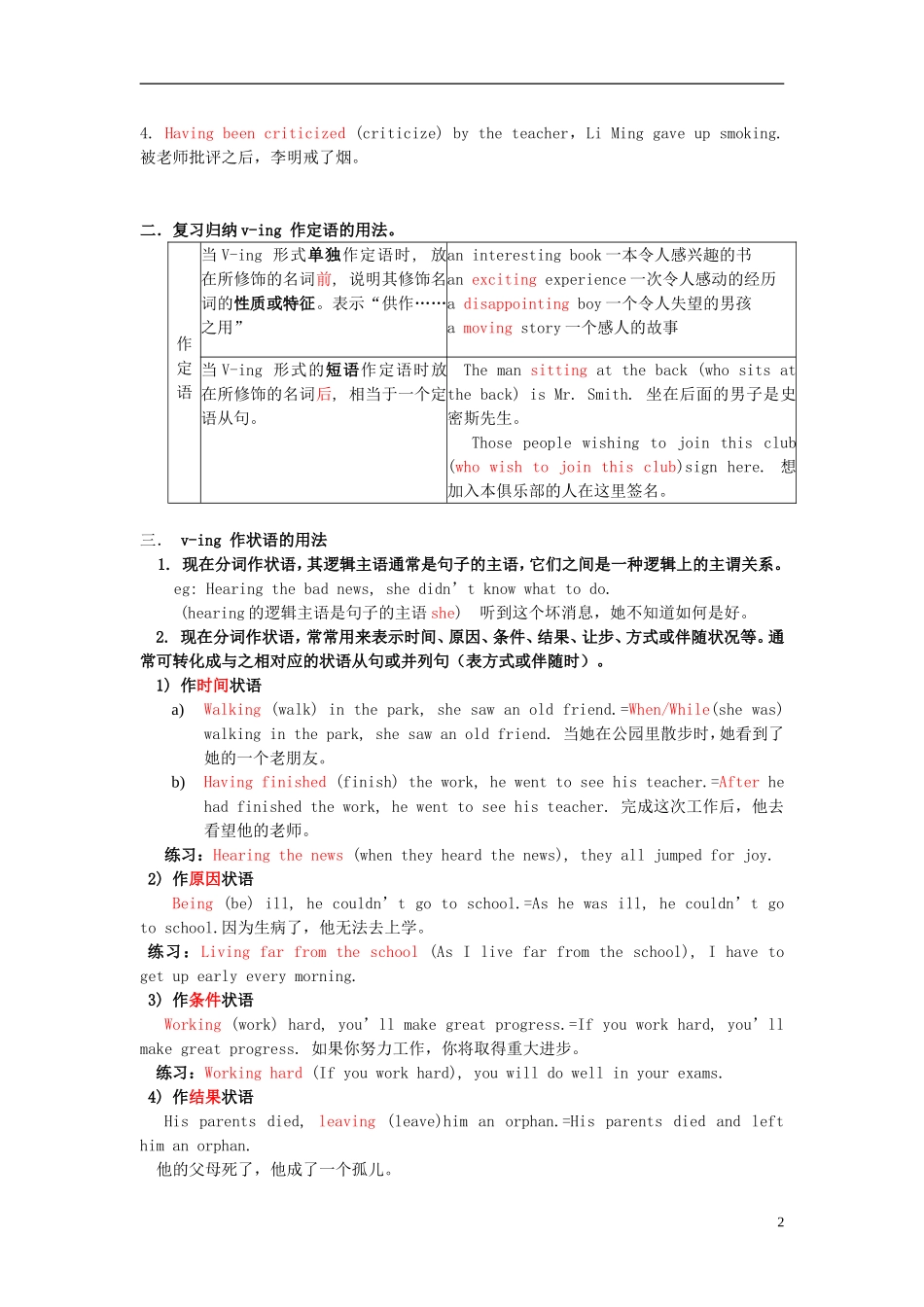B4U4 Grammar V-ing 作定、状语课前回顾和预习:1. 在 B4U3 Grammar 中,我们学习了 V-ing 作___________,___________和_____________.2. 什么叫做状语?一、 现在分词的形式变化现在分词由“动词+-ing”形式构成,在句子中可以作定语、表语、宾语补足语和状语。其否定形式是 “not doing”, 没有人称和数的变化, 但有时态和语态的变化。现在分词的基本形式如下: 语态时态主动形式被动形式一般式(not) doing( not )being done完成式( not )having done( not )having been doneeg: 1.Playing in the park, I met my friend Mary.2.Having finished his homework, he went out for a walk for a while.3.The building being built over there is our library.4. Having been shown around the Bird Nest, we were taken to the Water Cube.[归纳]1. 现在分词一般式(doing):表示的动作与谓语动词表示的动作同时发生; 完成式(having done):表示动作先于谓语动词表示的动作发生。(如例 1.2) 练习:1. C in the queue for two hours, John suddenly realized that he had left his money at home.A. To wait B. Have waited C. Having waited D. To have waited2. Sarah pretended to be cheerful, D nothing about the argument.A.says B.said C.to say D.saying3. Hearing (hear) the bell, the students began to enter the classroom. 听见铃声, 学生们开始走进教室。(听见和进入两个动作同时发生)。4. Having done (do) the work, he went home. 完成了工作, 他就回家了。(完成工作发成在回家之前); 5. T or F: The old man criticized the boy who had broken the window. T The old man criticized the boy having broken the window. F (现在分词完成式不作定语)[归纳]2.当句子的主语是分词动作的承受者时, 即主语与分词动作间的关系是被动关系时,分词用被动语态(being done):表示被动动作正在发生; 分词完成式的被动形式(having been done):强调被动动作先于谓语动词表示的动作发生。(如例 3.4)练习: 1. D many times, he finally understood it.A. Told B. Telling C. Having told D. Having been told2. C for 3 times, t...


